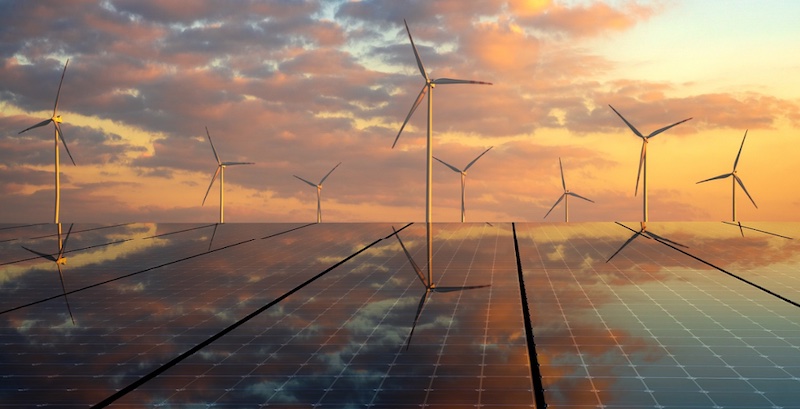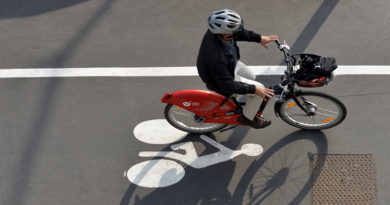
The future of EU electricity market – the importance of electricity grids keeping up the pace
While 2022 will be remembered by many as the year that energy prices spiralled to record levels as Europe paid the price for being over-dependent on imports of Russian fossil fuels, it is also possible that it will go down as a turning point in many aspects of the clean energy transition.
Last year, the EU witnessed a record surge in wind and solar power. 3 million heat pumps were installed. Nearly one in four new cars is now electric. This progress is in good part thanks to the European Green Deal, further strengthened by our efforts under REPowerEU to end imports of Russian fossil fuels. I recall that the Economist wrote earlier in the year that the Russian invasion of Ukraine may well have accelerated the decarbonisation process by 5-10 years.
With electricity supply and demand booming across Europe, we now need to ensure that we can cope with this new reality.
While our updated Electricity Market Design rules are still under negotiation, we should already look at the next steps. It is clear that a strong internal market can shield end-users from price spikes, as it always uses clean power production to the maximum, for both affordability, and decarbonisation objectives. But we also need to guarantee that clean electricity is not blocked by network constraints. Electricity consumption is expected to rise by roughly 60% between now and the end of the decade. Europe will only ensure its energy security and deliver on climate ambitions if our power infrastructure is ready. As well as storage and demand response, European grids must be ready.
Our 11 million kilometres of grids need to grow to serve increasing demand, but also change. With millions of rooftop solar panels and electric vehicles, electrolysers producing green hydrogen, and local energy communities sharing resources, we will need flexibility, speed and digitalisation. The deployment of more than 100 GW of offshore renewables by 2030 – from 16 GW in 2022 – will require the necessary grids offshore and onshore.
Today, renewable projects can face long delays before being connected to the grid. Securing permitting for grid reinforcements can take as long as 10 years. It is paradoxical that we have seen installations of new solar panels – the fastest way to switch to cheap renewable power – having to be suspended in some areas due to grid congestion. Even existing renewables plants are often penalised. Solar panels are the first technology to be ‘switched off’ when grids are overloaded, because they are flexible and easy to manage. This is wasteful and costly.
Throughout Europe, network development projects are delayed due to cost overruns, inflation and rising interest rates. Waiting times for equipment like cables or sub-stations can already go beyond the end of this decade.
By placing a stronger focus on our transmission and distribution grids, Europe can turn a potential barrier into a powerful enabler.
Our regulatory framework has reduced permitting for electricity transmission priority projects to under 3.5 years on average, and we are working to adapt it further and tackle regulatory barriers. Last year’s emergency legislation accelerated authorisation of new renewable projects, and this principle is now included in the freshly agreed Renewable Energy Directive, which will enter into force by the end of the year. I strongly believe that this will help address one of the major bottlenecks, fast-tracking without cutting corners on environmental safeguards. More technical assistance and sharing of best practices could also help national administrations to move faster.
We must also invest more and smarter. Europe needs to invest 584 billion euros in its grids by 2030. In July, the EIB increased financing by 50% to help mobilise over 150 billion euros in new green investments. A timely agreement on the new Electricity Market Design rules mentioned above would also help change the remuneration mechanisms for grids projects, boosting anticipatory investments to deliver the benefits of the transition much faster.
Making progress on cross border interconnections where they lag behind, would also increase security of supply, bring down prices, and enable the integration of renewables.
A focus on grids brings industrial and commercial opportunities for Europe.
The world’s three largest cable manufacturers are European and can tap into the global surge in renewables. 80 million kilometres of new grids are needed worldwide by 2030. The EU Net Zero Industry Act will support cable manufacturing along with other clean technologies, for our domestic and export markets.
Europe faces a fundamental challenge to ensure its energy independence and deliver on its climate goals. As we accelerate the roll out of renewables, it is time to bring the grids issue to the forefront of the debate. Upgrading the power grid will plug Europe into a sustainable future.




